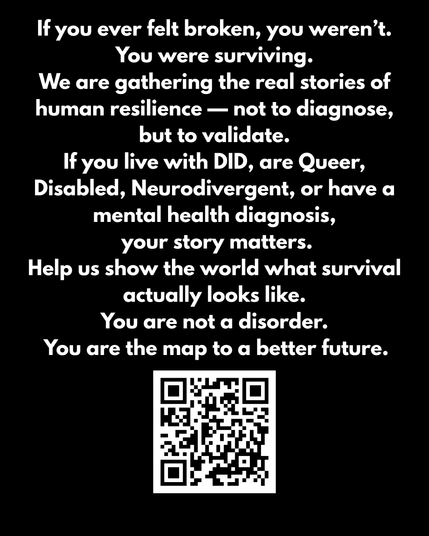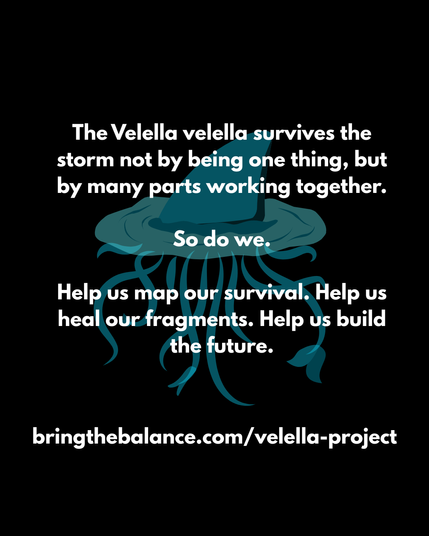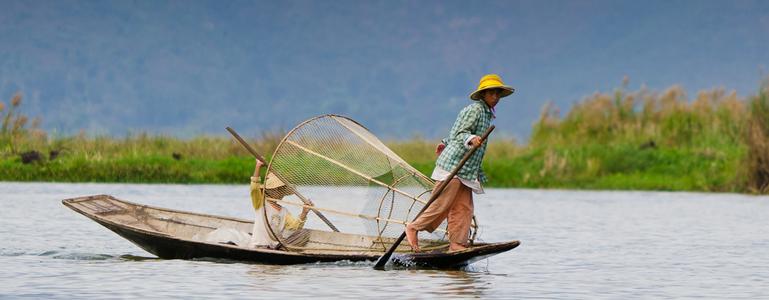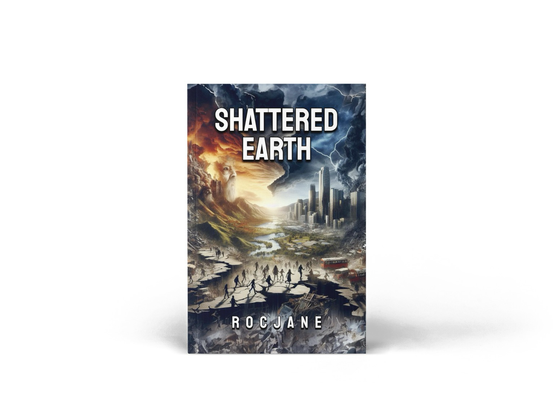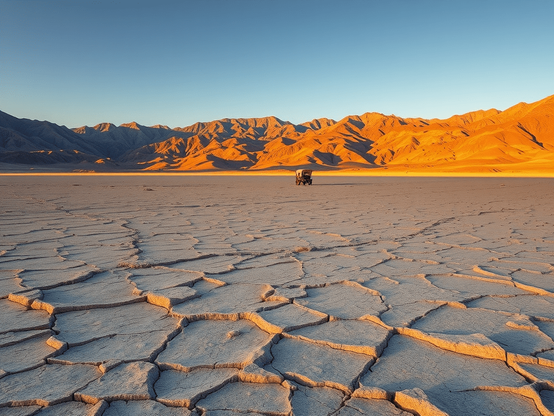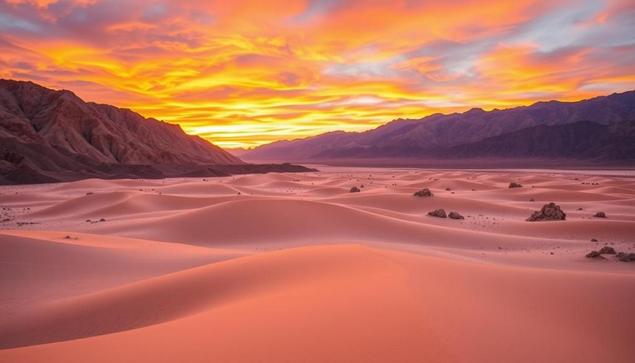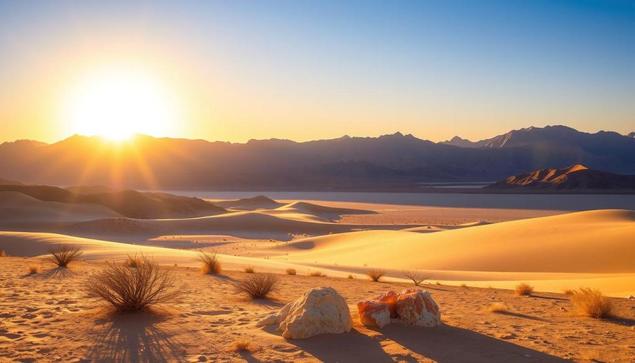#HumanResilience
In Julian Schnabel’s masterpiece, The Diving Bell and the Butterfly, a man is imprisoned within his own body, a brilliant mind trapped in a paralyzed form. His only connection to the world is the blink of his left eye. With this single, fragile action, he dictates an entire book, and the film plunges us directly into his reality. We see through his blurred vision and hear the rich, witty monologue of his inner world as he escapes into memory and imagination.
The film is a stunning visual poem about this duality: the ‘diving bell’ of the body and the ‘butterfly’ of the mind, which remains defiantly free. It is not a story about what was lost, but a powerful celebration of what can never be taken away: our dreams, our stories, and our ability to find freedom within the confines of the mind. A testament to human resilience and a masterpiece of cinematic empathy.
Tags:
#TheDivingBellAndTheButterfly #JulianSchnabel #filmreview #cinematicpoetry #humanresilience #memory #imagination #masterpiece
Father of One by Jani Anttola is a gripping tale of survival, love, and the brutal cost of war. As Maka escapes the fall of Srebrenica, he risks everything to find his wife and the son he's never met. Raw, urgent, and deeply human—this is historical fiction at its most powerful.
Father of One by Jani Anttola ~ $25 Gift Card ~ #WarFiction #LiteraryFiction ##FamilyInWar #HumanResilience #BosnianWar #Survival…
https://ginaraemitchell.com/father-of-one-spotlight/?utm_source=mastodon&utm_medium=jetpack_social
Why 536 was 'the worst year to be alive'
https://www.science.org/content/article/why-536-was-worst-year-be-alive
#HackerNews #worstyear #536history #darkages #medievalworld #climatecrisis #humanresilience
If you ever felt broken, you weren’t. You were surviving.
We are gathering the real stories of human resilience — not to diagnose, but to validate.
If you live with DID, are Queer, Disabled, Neurodivergent, or have a mental health diagnosis,
your story matters.
Help us show the world what survival actually looks like.
You are not a disorder.
You are the map to a better future.
#neurodivergent #realstories #scienceproject #humanresilience #adaptation #evolution
This image captures an Intha fisherman on Myanmar’s Inle Lake, skillfully balancing on one leg while rowing with the other — a centuries-old tradition unique to this place.
Their way of life is fragile, like the water beneath their feet. And yesterday’s devastating earthquake in Myanmar is a reminder of how quickly everything can change.
Let’s not only admire this beauty but also stand in solidarity with the people behind it.
Share if you believe these stories deserve to be seen.
#InleLake #Myanmar #InthaFisherman #CulturalHeritage #EarthquakeRelief #VisualStorytelling #HumanResilience #TravelPhotography #TraditionAndNature #PixelfedTraveler #FishermanLife #Solidarity
💬 What would you do in a fractured world? Share your thoughts in the comments—we’d love to hear from you!
🔖 #ShatteredEarth #RocJane #PostApocalypticFiction #SurvivalStory #DisasterFiction #HumanResilience #IndieAuthors #MustReadBooks #AmazonReads #UnityInAdversity #HopeInDarkTimes #ReadersOfInstagram https://www.facebook.com/share/r/1E2Vf4k1hy/?mibextid=wwXIfr
Embark on an Unforgettable Journey of Survival and Resilience! 🌍
✍️ Author: Roc Jane
📘 Book Title: Shattered Earth
📙 Available Now on Amazon
👉 Order Your Copy: https://shorturl.at/dpGIj
🔖 #ShatteredEarth #RocJane #PostApocalypticDrama #SurvivalThriller #DisasterFiction #GrippingReads #MustReadNovels #FictionBooks #IndieAuthorsRock #AmazonReads #ReadersOfInstagram #GlobalUpheaval #HumanResilience #UnityInAdversity #HopeInChaos #PageTurners
Global conflicts often feel distant until their effects show up in a clinic.
Dr. Arjun V.K. Sharma reflects on treating patients displaced by war, from TB cases to stories of resilience.
https://undark.org/2024/12/12/opinion-patients-from-conflict-zones/
#opinion #war #medicine #GlobalHealth #ConflictZones #RefugeeCare #HealthcareWorkers #HumanResilience #PublicHealth #MedicalCare #TBPrevention #HIVAwareness #WarImpact #HealthAndHope #DisplacementStories #TorontoClinic #HealthcareHeroes #ImmigrantHealth #undark #canada
Where Does the Name ‘Death Valley’ Come From?
Did you know the name “Death Valley” doesn’t come from its hot temperatures or harsh desert? It actually comes from a scary event during the California Gold Rush. As I explore the origins of this name, you’ll find it’s tied to a group of brave adventurers, not the valley’s harsh conditions.
Key Takeaways
- The name “Death Valley” originated from a group of ill-fated pioneers known as the Lost ’49ers.
- In the winter of 1849-1850, a band of 107 covered wagons set out from Salt Lake City to reach California, but only 7 made it through the direct path they chose.
- The group that took the direct route found themselves trapped in what is now known as Death Valley, barely surviving by relying on puddles and melted snow.
- After a month of hardship, two scouts returned with supplies and led the remaining ’49ers out of the valley, but not before one of them bitterly proclaimed the name “Death Valley” upon their departure.
- The name has endured as a testament to the trials and tribulations faced by these pioneering adventurers in the late 1840s.
A Brief Overview of Death Valley
Death Valley National Park is in southeastern California, near Nevada. It’s a natural wonder shaped by nature’s forces over centuries. Its vast landscape is a result of exploration and environmental changes.
Geographic Location and Features
Death Valley is a huge, dry area, about 140 miles long and 5 to 15 miles wide. It’s surrounded by four mountain ranges, making its terrain unique. The Badwater Basin is the lowest point in North America, 282 feet below sea level.
The park’s highest point, Telescope Peak, is 11,049 feet high. This peak contrasts sharply with the valley’s empty floor.
Climate and Landscape
Death Valley is known for its extreme weather. It holds the record for the hottest air temperature, 134°F (57°C), in 1913. Summers can hit over 120°F (49°C), with ground temperatures reaching 201°F (94°C).
Despite the harsh weather, the valley has a wide variety of plants and animals. They have adapted to live in this special environment.
Historical Significance
The history of Death Valley is fascinating. Native American tribes, like the Timbisha Shoshone, have lived here for over a thousand years. They left a lasting impact on the land.
European-American settlers and explorers, like the Jayhawkers, also explored the valley. They faced its challenges and added to its rich history.
“Death Valley is a place of legend. It is a land of fire and ice, of towering mountains and deep valleys, of extreme heat and bitter cold. It is a place of life and death, of beauty and desolation.”
The Early Inhabitants of Death Valley
Death Valley, known for its harsh climate, was home to the Timbisha Shoshone tribe for over a thousand years. This Native American group thrived in the extreme conditions. They became experts in survival, adding to the Death Valley history and exploration of Death Valley.
Native American Tribes
The Timbisha Shoshone tribe, with about 300 members today, had a strong bond with the land. They knew the valley’s resources well. They navigated the desert and used water wisely to live off the land.
Historical Accounts of the Area
The Timbisha Shoshone’s history in the area is well-documented. In 1849, during the California Gold Rush, settlers found the valley hard to survive. The Donner Party also faced harsh conditions in the Death Valley region.
Cultural Significance
The Timbisha Shoshone’s culture is deeply connected to Death Valley. They share stories like “Ground Afire,” which tells how the valley got its name. Today, they keep their ancestral ties alive with a reservation in the valley.
“The Timbisha Shoshone have lived in the Great Basin region, including Death Valley, for over a thousand years, mastering the art of survival in one of the harshest environments on Earth.”
The Gold Rush Era
The history of Death Valley is closely tied to the gold rush of the mid-19th century. In 1849, gold was found in Death Valley, sparking a series of events. These events shaped the region’s exploration and growth.
Discovery of Gold
The gold discovery in Death Valley happened during the California Gold Rush. It drew many prospectors and settlers looking for wealth. Miners came to the valley, hoping to find gold in the harsh desert.
Impact on Population Growth
The arrival of gold seekers led to a big increase in Death Valley’s population. What was once a quiet area became busy with settlers and mining camps. This change not only altered the landscape but also deeply influenced the valley’s culture and history.
The Role of Miners
Miners were crucial in shaping Death Valley’s history. They mined gold and other minerals, exploring the area and discovering its secrets. Despite the extreme conditions, they left a lasting impact on the valley’s history and identity.
Key Mineral DiscoveriesYearGold1849Silver1860sBorax1881Talc1890sTungsten1917The gold rush era in Death Valley had a lasting impact. It shaped the region’s exploration, population, and the role of miners who faced harsh conditions for their dreams.
The Origins of the Name ‘Death Valley’
The story of how “Death Valley” got its name is fascinating. This dry and harsh area in California has always been mysterious. But what led to its ominous name?
Early Uses of the Name
The name “Death Valley” comes from the Lost ’49ers, pioneers who arrived in December 1849. After a tough journey, one of them said, “Goodbye, Death Valley.” This moment is why many think of this place as Death Valley.
The Legend Behind the Name
But there are other stories too. Some say the name comes from the extreme heat and dryness. Others believe it’s because many people have died there while trying to explore.
Various Theories
There are many theories about the name. Some think it comes from a Native American word. Others believe it was meant to scare people away. But one thing is clear: Death Valley is known for its beauty and challenges.
Those words from the Lost ’49ers have stuck with us. As we learn more about Death Valley, its name remains a key part of its story.
Famous Explorers and Their Impact
Death Valley has been explored by many brave adventurers. These explorers mapped the area, faced its challenges, and helped us understand this harsh landscape.
John C. Frémont’s Expedition
John C. Frémont is famous for his Death Valley expeditions in the 1840s. He explored the valley’s geography, climate, and resources. His reports and maps showed Death Valley as a dangerous place, earning it its ominous name.
Other Notable Explorers
Other Death Valley explorers also made big contributions. Jefferson Hunt led Mormon wagon trains through the area. William Lewis Manly and John Rogers were scouts who saved travelers. They mapped the area and found safe paths, helping others follow.
Influence on Mapping
The work of these Death Valley explorers was key to understanding the valley. Their detailed notes and maps helped us grasp the region’s geography and challenges. Their legacy helps us appreciate and protect this natural wonder today.
The Role of Death in Its Naming
The name “Death Valley” is a haunting reminder of the dangers faced by early explorers. Although only one death was officially recorded, the name captures the extreme challenges. It shows the potential for fatality in this desolate landscape.
Fatalities in the Region
The name “Death Valley” comes from a winter disaster in December 1849. A group of settlers, known as the Lost ’49ers, were dehydrated, starving, and exposed. Despite the dangers, only one member died. Yet, the name “Death Valley” stuck, symbolizing the struggle to survive in such a harsh place.
The Symbolism of Suffering
The name “Death Valley” reflects the valley’s harsh conditions. It has extreme heat and little water, earning its reputation as a place of danger. The name reminds us of the hardships faced by early explorers and settlers, highlighting the fragility of human life against nature’s harshness.
Connections to Nature’s Harshness
Death Valley’s name highlights its unyielding nature. Its barren landscapes, scorching temperatures, and scarce resources are daunting. The name “Death Valley” is a testament to the valley’s power, showing the delicate balance between life and nature’s forces.
StatisticValueHighest Recorded Air Temperature134°F (57°C) on July 10, 1913Lowest Point in North AmericaBadwater Basin, 282 feet below sea levelLength of Death Valley140 miles from north to southPotentially Dangerous AnimalsRattlesnakes, scorpions, black widow spiders, coyotes, mountain lionsThe Death Valley name captures the harsh realities and dangers of this region. Survival in Death Valley shows human resilience and nature’s power. The valley’s history and origin of the Death Valley name continue to fascinate and challenge explorers and those who seek to understand this remarkable landscape.
Modern Interpretations of the Name
Today, “Death Valley” has a new meaning. It’s no longer just a scary name. Now, it draws people who want to experience extreme adventures and see one of the toughest places on Earth. Death Valley National Park is a hotspot for thrill-seekers. They come to see the highest temperatures and the unique landscapes.
Tourism and Popular Culture
The fame of Death Valley’s history has made it a popular spot. People love its beauty and the chance to push their limits in the heat. The stories of struggles and hardships have made it famous in books, movies, and TV.
The Name’s Impact on Conservation
The scary name “Death Valley” has also helped protect it. It has brought attention to its fragile ecosystem. This has led to efforts to save this natural wonder for the future.
Changing Perceptions
More people visiting Death Valley National Park are changing how we see it. The name still means adventure, but now it also means beauty and history. It shows the strength of humans and the amazing power of nature.
The Legend of the Lost Wagon Train
The story of the Death Valley ’49ers wagon train is a key part of the area’s history. In 1849, a group of pioneers aimed for the California gold fields. But, they soon found themselves fighting for survival in Death Valley.
The Story Behind the Legend
The journey started in Salt Lake City with over 100 wagons. Led by Jefferson Hunt, they aimed for California. A part of the group took a shortcut through the Escalante Desert, leading them into Death Valley.
As they went deeper, they had to leave their wagons and belongings behind. This was because there was no water and food for their oxen. The group, now with just 27 wagons, faced many challenges.
Its Relation to the Valley’s Name
The struggles of the Death Valley ’49ers helped give the valley its name. Their fight for survival and the threat of death left a lasting impact. This is why “Death Valley” is such a fitting name.
Cultural Impact Over Time
The legend of the lost wagon train has inspired many. It shows how people can overcome great challenges. The stories of William Lewis Manly and John Rogers, who saved some, are famous.
Today, the story of the Death Valley ’49ers still draws visitors. It reminds us of the area’s history and the human spirit’s strength.
Death Valley in Literature and Media
Death Valley National Park has always fascinated writers, filmmakers, and the public. Its extreme temperatures, unique landscapes, and rich history have inspired many. Books, novels, documentaries, and films have shaped how we see Death Valley.
The Lost City of the Monkey God: A True Story
The #1 New York Times and Wall Street Journal bestseller, named one of the best books of the year by The Boston Globe and National Geographic: acclaimed journalist Douglas Preston takes readers on a true adventure deep into the Honduran rainforest in this riveting narrative about the discovery of a lost civilization — culminating in a stunning medical mystery.
Get on AmazonBooks and Novels Featuring the Valley
Many books have explored Death Valley’s mystery. The Lost City of the Monkey God by Douglas Preston tells of an expedition to find an ancient city. The Monkey Wrench Gang by Edward Abbey follows activists fighting against development in the Southwest, including Death Valley.
The Monkey Wrench Gang
Edward Abbey’s classic tale of rebellion, camaraderie, and environmental justice—a prescient, comic masterpiece of destructive mayhem and outrageous civil disobedience that speaks to us today—now available in a commemorative fiftieth anniversary edition.
Get on AmazonDocumentaries and Films
Death Valley’s landscapes and history have inspired many documentaries. Charting Death Valley shows the dangers faced by early explorers. Films like Zabriskie Point and Mad Max: Fury Road have also used Death Valley as a setting.
How This Influences Public Understanding
Media has greatly influenced how we see Death Valley. It often focuses on the valley’s extreme conditions and beauty. This has sparked interest and curiosity, leading to more visits and appreciation for its history and exploration.
Fun Facts About Death Valley
Death Valley National Park is a land of extremes. It draws visitors with its unique geography, rich history, and remarkable resilience. As the hottest and driest place in North America, it holds many fascinating facts.
Record High Temperatures
Death Valley is famous for its scorching temperatures. It holds the world record for the hottest air temperature ever recorded at 134°F (57°C) in 1913. Even today, it keeps breaking heat records, like the 130°F (54°C) in 2021 at Furnace Creek.
Unique Flora and Fauna
Despite the harsh conditions, Death Valley is home to diverse wildlife. You can find coyotes, bighorn sheep, and the unique pupfish. These species have adapted to thrive in the extreme environment.
Notable Events and Festivals
Death Valley National Park celebrates its unique character with various events and festivals. One notable event is the rare “superbloom,” where wildflowers bloom after heavy winter rains. The park also hosts the Mesquite Bean Festival, honoring the Timbisha Shoshone tribe’s tradition.
Death Valley National Park is awe-inspiring. It has record-breaking temperatures, captivating wildlife, and cultural events. It continues to inspire all who visit its rugged and breathtaking landscape.
The Future of Death Valley’s Name
Looking ahead, Death Valley National Park is set to continue its conservation efforts. These efforts focus on the name’s origin and preserving its cultural heritage. There are no plans to change the name yet, but there’s a growing interest in its history.
Ongoing Conservation Efforts
The National Park Service and environmental groups are working hard to protect Death Valley. They aim to keep its ecosystem and natural resources safe. This includes preserving plants and animals and fighting climate change.
Discussions on Name Changes
Lately, there’s been talk about changing the origin of Death Valley’s name. Some think the name might affect how people see the place. But, any name change would need to think about the area’s historical significance and what local communities think.
Maintaining Heritage and Significance
Even if the name stays the same, the focus is on keeping Death Valley‘s legacy alive. This means teaching visitors about its history and the people who lived there. It’s about celebrating the area’s rich past.
As Death Valley National Park grows, so will the debate about its name. By balancing conservation, cultural respect, and history, we can keep this amazing desert a symbol of human strength and nature’s power.
Conclusion: Reflecting on Death Valley’s Name
Exploring Death Valley National Park reveals a name with deep meaning. What was once scary is now a symbol of strength and wonder. The name “Death Valley” now welcomes us to discover its secrets and marvel at its unique beauty.
Personal Thoughts on the Name
The name “Death Valley” fascinates me. It shows the valley’s danger and beauty. Learning about its history and the people who faced its challenges, I see the name as a sign of human strength. It reminds us that we can overcome extreme challenges and find beauty in unexpected places.
The Importance of History and Legacy
Death Valley’s name is tied to its rich history. It’s a story of exploration, survival, and the quest to explore the unknown. By exploring this history, we appreciate the valley’s importance and the legacies it has left. From the indigenous tribes to the brave pioneers, each part of Death Valley’s story adds to its lasting impact.
Inviting Others to Explore the Valley
Thinking about “Death Valley” fills me with excitement and wonder. It’s a place that challenges our views, tests our limits, and shows nature’s power. By inviting others to explore, we can deepen our understanding and respect for its history, landscapes, and resilience. Death Valley invites us to explore beyond our limits and discover its mysteries and wonders.
FAQ
Where does the name ‘Death Valley’ come from?
The name “Death Valley” comes from the Lost ’49ers, pioneers who entered in December 1849. They left after a tough experience. One said, “Goodbye, Death Valley,” giving it its name.
What is the geographic location and features of Death Valley?
Death Valley is in southeastern California, near Nevada. It’s the lowest point in the U.S., with Badwater Basin 282 feet below sea level. The valley is 140 miles long, with a desert floor and extreme temperatures.
What is the climate and landscape of Death Valley?
Death Valley is the hottest place on Earth, with a record 134°F (57°C) in 1913. It has salt flats, sand dunes, and colorful rocks, perfect for photographers.
Who were the original inhabitants of Death Valley?
The Timbisha Shoshone lived in Death Valley for thousands of years. European settlers found it hard to navigate during their westward journey.
What was the impact of the gold rush on Death Valley?
Gold was found in 1849, during the California Gold Rush. This brought many settlers and miners. Mining activities greatly impacted the area.
What were some notable explorers of Death Valley?
Jefferson Hunt led wagon trains through Death Valley. William Lewis Manly and John Rogers became scouts, helping stranded pioneers. They mapped the area and found routes through the harsh terrain.
What was the significance of the name ‘Death Valley’?
The name “Death Valley” shows the challenges early explorers faced. While only one death was recorded, the name warns of the dangers. The extreme heat and lack of water made it a place of fear.
How has the perception of Death Valley changed over time?
The name “Death Valley” once scared people, but now it draws curiosity. It attracts visitors with its beauty and stories, showing a deeper appreciation for this unique place.
What is the legend of the Lost Wagon Train?
The Lost ’49ers wagon train is key to Death Valley’s name. In 1849, pioneers sought a shortcut to California’s goldfields. They faced hardships and were rescued by William Lewis Manly and John Rogers. This story is a big part of Death Valley’s history.
How has Death Valley been represented in popular culture?
Death Valley has been in books, novels, documentaries, and films. These works highlight its extreme conditions, landscapes, and history. They’ve made Death Valley famous and continue to interest people.
What are some fun facts about Death Valley?
Death Valley is the hottest place on Earth, with a record 134°F (57°C). It’s home to coyotes, bighorn sheep, and pupfish. The valley hosts events and festivals, celebrating its extreme environment and rich history.
What is the future of Death Valley’s name?
Death Valley’s name is tied to conservation and cultural sensitivity. There are no plans to change it, but its history and significance are growing. Efforts focus on preserving the environment and cultural heritage, ensuring Death Valley’s identity for future generations.
Source Links
- https://actiontourguide.com/2023/04/06/whats-the-story-behind-the-name-death-valley/ – Where Did the Name “Death Valley” Come From? | Action Tour Guide
- https://en.wikipedia.org/wiki/Death_Valley – Death Valley
- https://en.wikipedia.org/wiki/Death_Valley_National_Park – Death Valley National Park
- https://guides.osu.edu/c.php?g=870252&p=6652986 – Research Guides: National Parks: Death Valley National Park
- https://www.nationalparkstraveler.org/parks/death-valley-national-park/park-history-death-valley-national-park – Park History: Death Valley National Park
- https://www.britannica.com/place/Death-Valley – Death Valley | Environment, Location, Map, & Facts | Britannica
- https://www.legendsofamerica.com/ca-queendeathvalley/ – The Queen Of Death Valley
- https://www.nationalgeographic.com/history/article/death-valley-name-extreme-desert-topography – How did Death Valley get its name? Not from the heat
- https://dlab.epfl.ch/wikispeedia/wpcd/wp/d/Death_Valley_National_Park.htm – Death Valley National Park
- https://www.oasisatdeathvalley.com/pressrelease/a-historical-chronology-backgrounder/ – A Historical Chronology (Backgrounder) – The Oasis at Death Valley
- https://www.nps.gov/deva/learn/historyculture/people.htm – People – Death Valley National Park (U.S. National Park Service)
- https://www.usgs.gov/geology-and-ecology-of-national-parks/ecology-death-valley-national-park-0 – Ecology of Death Valley National Park
- https://www.nps.gov/deva/learn/historyculture/the-lost-49ers.htm – The Lost ’49ers – Death Valley National Park (U.S. National Park Service)
- https://www.history.com/topics/19th-century/lewis-and-clark – Lewis and Clark: Expedition, Purpose & Facts | HISTORY
- https://en.wikipedia.org/wiki/List_of_explorers – List of explorers
- https://www.nps.gov/deva/faqs.htm – Frequently Asked Questions – Death Valley National Park (U.S. National Park Service)
- https://www.oasisatdeathvalley.com/connect/stories/whats-in-a-name/ – What’s In a Name – The Oasis at Death Valley
- https://www.nps.gov/museum/exhibits/death_valley/print.html – No title found
- https://www.independent.co.uk/climate-change/news/death-valley-heatwave-weather-california-b2379595.html – Why is Death Valley one of the hottest places on Earth?
- https://www.nps.gov/deva/general-management-plan.htm – General Management Plan – Death Valley National Park (U.S. National Park Service)
- https://en.wikipedia.org/wiki/Death_Valley_’49ers – Death Valley ’49ers
- https://mojavedesert.net/history/the-story-of-inyo-chalfant/death-valley-party-of-1849.html – The Story of Inyo
- https://www.legendsofamerica.com/ca-deathvalley/ – Death Valley National Park
- https://www.theadvocate.com/curious_louisiana/when-did-deaf-valley-become-death-valley/article_ed2d61e0-48d8-11ee-aa3a-9b278097a780.html – Curious Louisiana: When did ‘Deaf Valley’ become ‘Death Valley’?
- https://www.newyorker.com/magazine/2016/11/14/death-valley-is-alive – Death Valley Is Alive
- https://morethanjustparks.com/death-valley-national-park-facts/ – 15 (FASCINATING) Death Valley National Park Facts You Probably Didn’t Know
- https://californiacrossings.com/facts-about-death-valley-national-park/ – 10 Cool Facts About Death Valley National Park
- https://www.treehugger.com/death-valley-national-park-5197725 – 10 Otherworldly Facts About Death Valley National Park, the Hottest Place on Earth
- https://www.nps.gov/deva/learn/nature/geology.htm – Geology – Death Valley National Park (U.S. National Park Service)
- https://www.travelibn.com/geology-of-death-valley – Geology of Death Valley — Inspired By Nature
- https://wildlandtrekking.com/blog/all-about-death-valley-national-park/ – All About Death Valley National Park | Wildland Trekking Blog
- https://www.davidjgrenier.com/blog/2016/02/my-favorite-places-in-death-valley-national-park-january-2016 – Gallery
- https://www.nps.gov/museum/tmc/DEVA/DEVA Who is Death Valley Scotty.html – National Park Service Teaching with Museum Collections Lesson Plans
#1 #badwaterBasin #CaliforniaGoldRush #DeathValleyNameOrigins #desertHistory #earlyExplorers #extremeTemperatures #goldDiscovery #harshConditions #historicalSignificance #humanResilience #Lost49ersPioneers #survivalStruggles #symbolicName #TimbishaShoshone #wagonTrainLegend
#LifeChallenges #IntegrityMatters #ResilienceJourney #TriumphOverAdversity #PersonalGrowth #EmbracingStruggles #LifeLessonsLearned #InnerStrength #OvercomingObstacles #HumanResilience #CharacterBuilding #SurvivingStruggles #LifeTriumphs #MaintainingIntegrity #InnerTransformation #StrengthInHardship #DignityIntact #PersonalDevelopment #ChallengesFaced #AdversityandGrowth #ResiliencePower #TriumphOfCharacter #PersonalEvolution #LifeStruggles #TriumphantSpirit
#LifeChallenges #IntegrityMatters #ResilienceJourney #TriumphOverAdversity #PersonalGrowth #EmbracingStruggles #LifeLessonsLearned #InnerStrength #OvercomingObstacles #HumanResilience #CharacterBuilding #SurvivingStruggles #LifeTriumphs #MaintainingIntegrity #InnerTransformation #StrengthInHardship #DignityIntact #PersonalDevelopment #ChallengesFaced #AdversityandGrowth #ResiliencePower #TriumphOfCharacter #PersonalEvolution #LifeStruggles #TriumphantSpirit
#LifeChallenges #IntegrityMatters #ResilienceJourney #TriumphOverAdversity #PersonalGrowth #EmbracingStruggles #LifeLessonsLearned #InnerStrength #OvercomingObstacles #HumanResilience #CharacterBuilding #SurvivingStruggles #LifeTriumphs #MaintainingIntegrity #InnerTransformation #StrengthInHardship #DignityIntact #PersonalDevelopment #ChallengesFaced #AdversityandGrowth #ResiliencePower #TriumphOfCharacter #PersonalEvolution #LifeStruggles #TriumphantSpirit
RT @matthieugarin@twitter.com: 🏅#Mustread🏅 Récit de l'attaque #NotPetya par employés #Maersk https://buff.ly/2w5jQ3T -> passionnant !
- cellule de crise: 600 ETP dont 200 #Deloitte
- back-up AD retrouvé.. au Ghana, intact grâce à black-out réseau ! Ouf !
- système D tout au long de la crise #humanresilience
🐦🔗: https://twitter.com/matthieugarin/status/1032337143740424192





